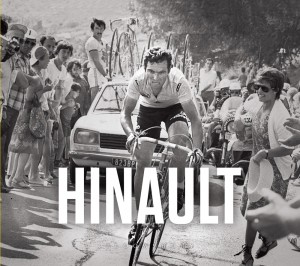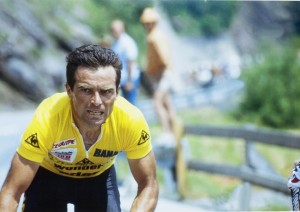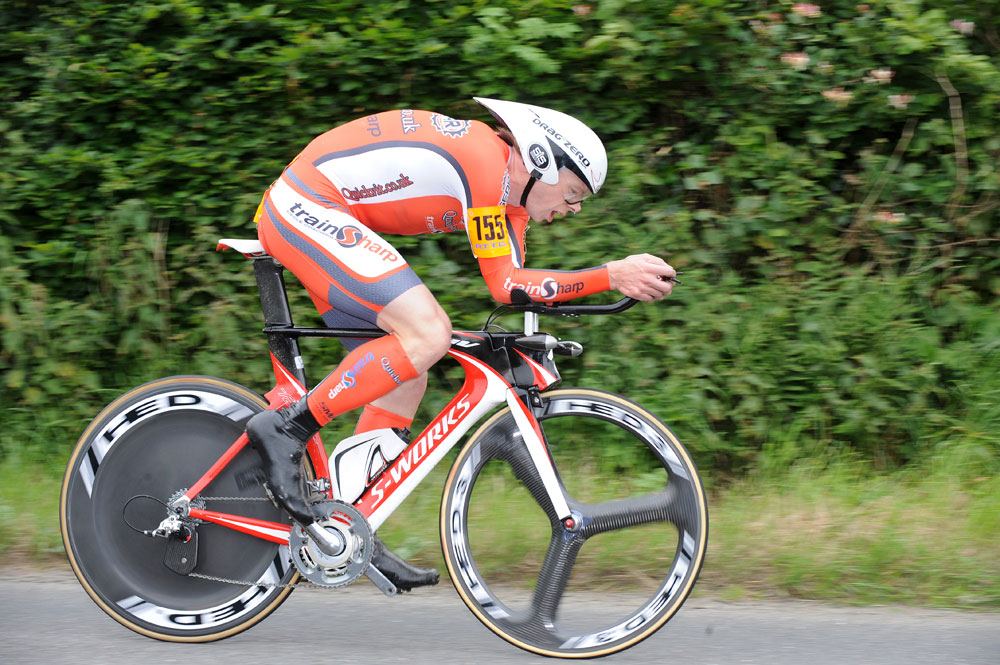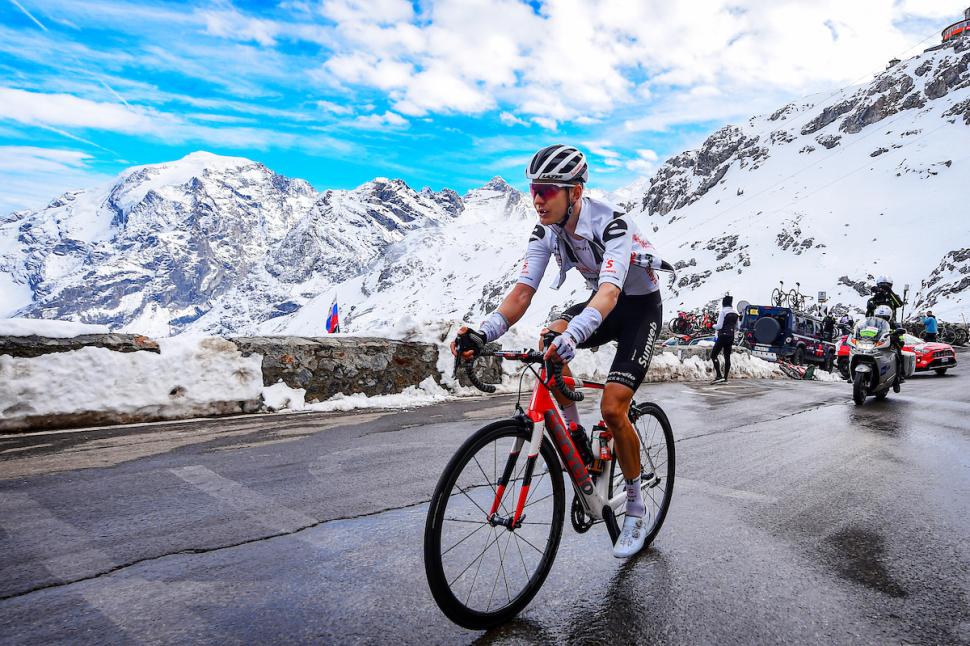 There’s an unspoken narrative to this sumptuous coffee table book exploring the spectacular career of Bernard Hinault. As the young Frenchman is producing the kind of eye-catching, aggressive rides that will earn him the “Badger” moniker, all the images from the late 1970s are in black and white. With just a cap on his head, the vintage Gitane shirt on his back and spectators in their Sunday best as a grim-faced Hinault does the Gent-Wevelgem/Liege-Bastogne-Liege double in just five days, 1977 seems as distant as the days of Coppi or Anquetil. By the end of the book, however, five victorious Tours De France wins later, Hinault is dressed in searingly bright yellow, sipping from a Coca-Cola bidon and sporting an incredibly cool pair of Aviator sunglasses. The inference is clear. Hinault dragged cycling into the modern era.
There’s an unspoken narrative to this sumptuous coffee table book exploring the spectacular career of Bernard Hinault. As the young Frenchman is producing the kind of eye-catching, aggressive rides that will earn him the “Badger” moniker, all the images from the late 1970s are in black and white. With just a cap on his head, the vintage Gitane shirt on his back and spectators in their Sunday best as a grim-faced Hinault does the Gent-Wevelgem/Liege-Bastogne-Liege double in just five days, 1977 seems as distant as the days of Coppi or Anquetil. By the end of the book, however, five victorious Tours De France wins later, Hinault is dressed in searingly bright yellow, sipping from a Coca-Cola bidon and sporting an incredibly cool pair of Aviator sunglasses. The inference is clear. Hinault dragged cycling into the modern era.
Hinault, by Ruben Van Gucht, is built around such extraordinary images, of the Badger in the French national jersey leading the peloton through snow-capped Alps, or in the maglia rosa, teeth clenched, on the Plan de Montecampione. Most of the time, he’s at the head of the race – which is hardly editorial license. As the last real patron of the peloton, he led from the front. As he said in his autobiography: “I attack. So the others don’t know I am suffering.”
There are plenty of other tremendous quotes alongside the photography in Hinault, including the famous explanation for competing with team-mate Greg LeMond in the 1986 Tour De France, his last. “I pushed him as hard as I could and put him under maximum pressure… I did it for his own good. Next year maybe he’ll have to fight off another rider. Now he knows how to fight back.”
 That quote is, of course, right at the end of the book. Van Gucht chronicles what Richard Moore’s brilliant Slaying The Badger calls “The Greatest Ever Tour De France” in forensic detail, but determinedly from Hinault’s point of view. It makes Hinault more of a celebration than a rigorous exploration of life and legacy – maybe we’ll have to wait for William Fotheringham’s Bernard Hinault and the Fall And Rise Of French Cycling, published next month, for that.
That quote is, of course, right at the end of the book. Van Gucht chronicles what Richard Moore’s brilliant Slaying The Badger calls “The Greatest Ever Tour De France” in forensic detail, but determinedly from Hinault’s point of view. It makes Hinault more of a celebration than a rigorous exploration of life and legacy – maybe we’ll have to wait for William Fotheringham’s Bernard Hinault and the Fall And Rise Of French Cycling, published next month, for that.
And sometimes, Van Gucht’s faintly hagiographic style is a problem. There is no mention of the rumours of doping that surrounded Hinault, and when he wins La Doyenne in 1980, it’s called “a triumph of human determination seldom seen again in sport.” The Badger’s performance was good, incredible even – this was the year dubbed “Niege-Bastogne-Niege”, thanks to the blizzard conditions. But it’s not the only time Van Gucht uses blushingly florid language to describe his hero, which steadily dulls the impact of his words. The decision to describe most of the seasons and races in the present tense works well during moments of high drama, but when Hinault is battling with injury, it reads oddly. “A stubborn knee the villain of the piece. It keeps Hinault awake. The Breton doesn’t count sheep; he mulls the missed opportunity to deliver an awesome performance”.
Still, Rebekah Wilson’s translation does convey the tenacity and determination of Hinault as vividly as the images which are this book’s real raison d’etre. The penultimate shot is of Merckx and Hinault on a tandem, with their ten Tours, eight Giros and three Vueltas between them. Tellingly, it’s in black and white.
Hinault by Ruben Van Gucht (Bloomsbury, £35) is out now.


